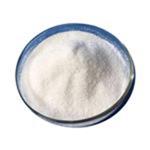- Itaconic acid
-

- $0.00 / 25KG
-
2025-04-26
- CAS:97-65-4
- Min. Order: 1KG
- Purity: 99.5%
- Supply Ability: 5000mt/year
- Itaconic acid
-

- $6.00 / 1kg
-
2025-04-25
- CAS:97-65-4
- Min. Order: 1kg
- Purity: 99%
- Supply Ability: 2000KG/Month
- Itaconic acid
-

- $1.00 / 1PCS
-
2025-04-23
- CAS:97-65-4
- Min. Order: 1PCS
- Purity: 99%
- Supply Ability: 10 mt
|
| | Itaconic acid Chemical Properties |
| Melting point | 165-168 °C (lit.) | | Boiling point | 268°C | | density | 1.573 g/mL at 25 °C (lit.) | | vapor pressure | 0.0000115 Pa (20 °C) | | refractive index | 1.4980 (estimate) | | Fp | 268°C | | storage temp. | Store below +30°C. | | solubility | 77.49g/l | | pka | 3.85(at 25℃) | | form | Crystalline Powder or Crystals | | Specific Gravity | 1.573 | | color | White to light beige | | PH | 3.5(1 mM solution);2.95(10 mM solution);2.43(100 mM solution); | | Odor | Characteristic Odor | | Water Solubility | Soluble in water, acetone, methanol, hexane and ethanol. Slightly soluble in benzene, chloroform, carbon disulfide and petroleum ether. | | Sensitive | Hygroscopic | | Merck | 14,5242 | | BRN | 1759501 | | Stability: | Light Sensitive | | InChIKey | LVHBHZANLOWSRM-UHFFFAOYSA-N | | LogP | -0.301 at 20℃ | | CAS DataBase Reference | 97-65-4(CAS DataBase Reference) | | NIST Chemistry Reference | Butanedioic acid, methylene-(97-65-4) | | EPA Substance Registry System | Itaconic acid (97-65-4) |
| | Itaconic acid Usage And Synthesis |
| Discovery |
Itaconic acid was discovered by Baup in 1837 as a product of the pyrolytic distillation of citric acid. The name itaconic was devised as an anagram of aconitic. Itaconic acid is formed in the fermentation of some sugars. In 1929, Kinoshita first showed the acid as a metabolic product of Aspergillus itaconicus.
| | Source | Itaconic acid is formed by the cytosolic enzyme aconitate decarboxylase from cis-aconitic acid. Another biosynthetic pathway from pyruvate through citramalic acid, citraconic acid, and itartaric acid also results in itaconic acid. | | Chemical Properties | white to light beige crystalline powder | | Uses | The major uses for itaconic acid are in copolymerizations,
resins, plasticizers, and as lube oil additives. | | Uses | Itaconic acid is used in the preparation of acrylonitrile-butadiene-styrene and acrylate latexes. It is also used to prepare poly-itaconic acid, resins biofuel components and ionomer cements. It finds application in the textile, chemical and pharmaceutical industries. It is also used as an additive in fibers and ion exchange resins to increase abrasion, waterproofing, physical resistance, dying affinity and better duration. Further, it acts as a co-monomer used in the preparation of acrylic fibers and rubbers, reinforced glass fiber, artificial diamonds and lens. In addition to this, it acts as a binder and sizing agent in non-weaving fibers. | | Definition | itaconic acid: A product of the fermentationof the flamentous fungusAspergillus niger. Itaconic acid is usedcommercially in the production ofadhesives and paints. | | Definition | ChEBI: A dicarboxylic acid that is methacrylic acid in which one of the methyl hydrogens is substituted by a carboxylic acid group. | | General Description | Itaconic acid, an unsaturated dicarbonic organic acid, is a metabolic product of Aspergillus itaconicus. | | Flammability and Explosibility | Non flammable | | Purification Methods | Crystallise itaconic acid from EtOH, EtOH/water or EtOH/*benzene. [Beilstein 2 IV 2228.] |
| | Itaconic acid Preparation Products And Raw materials |
|